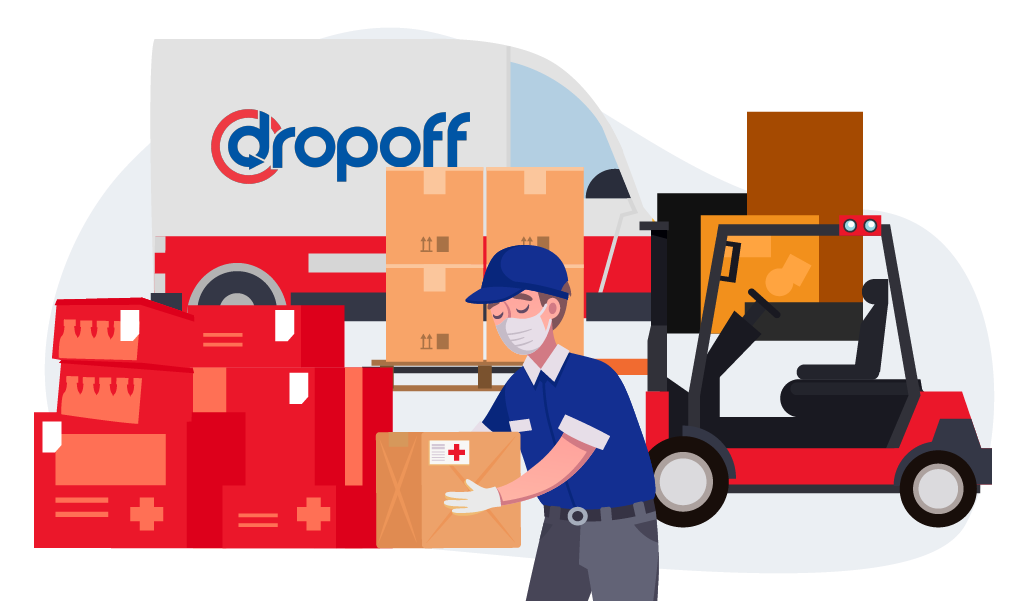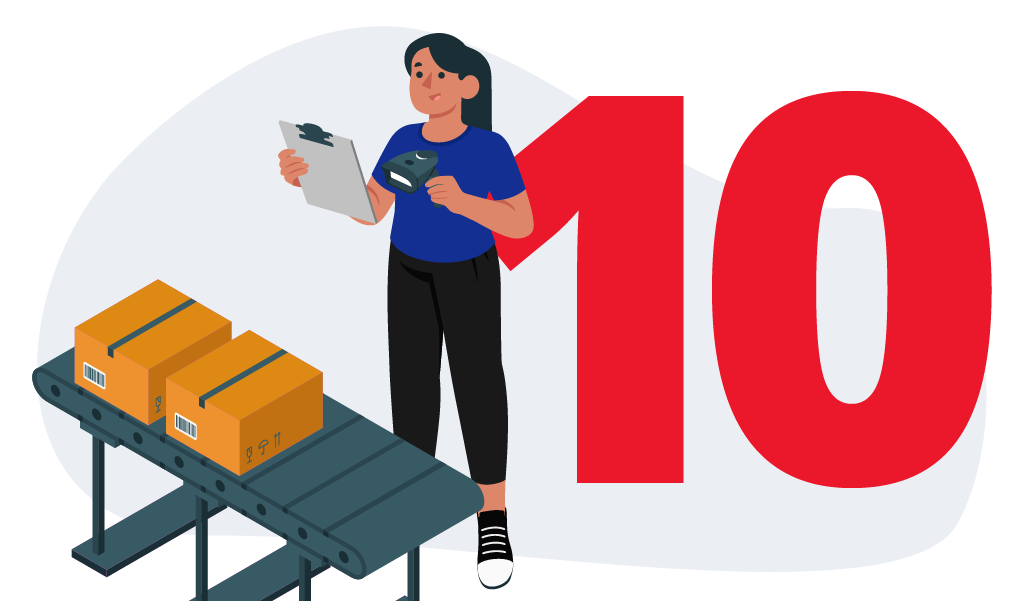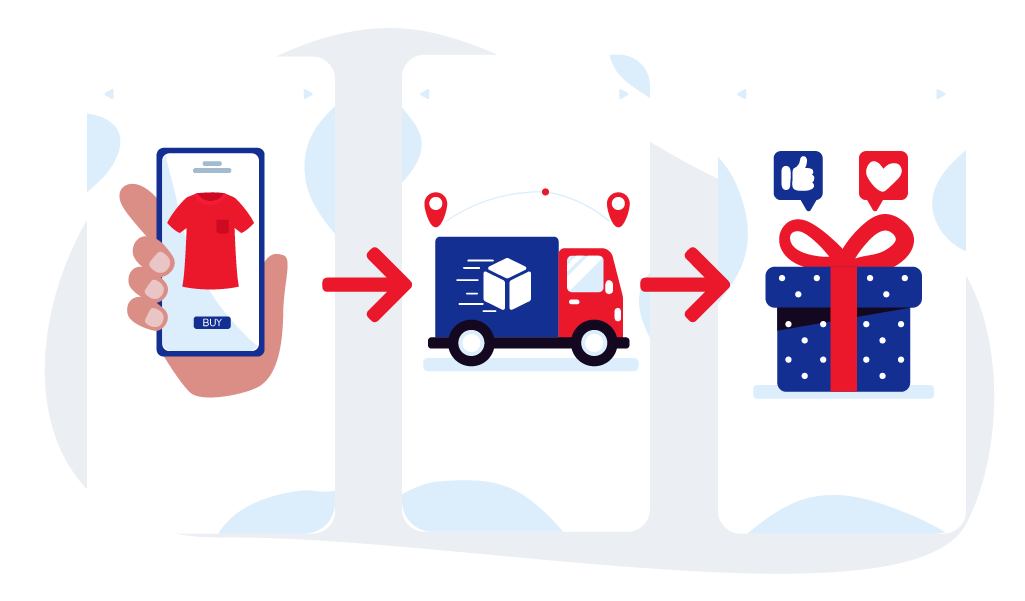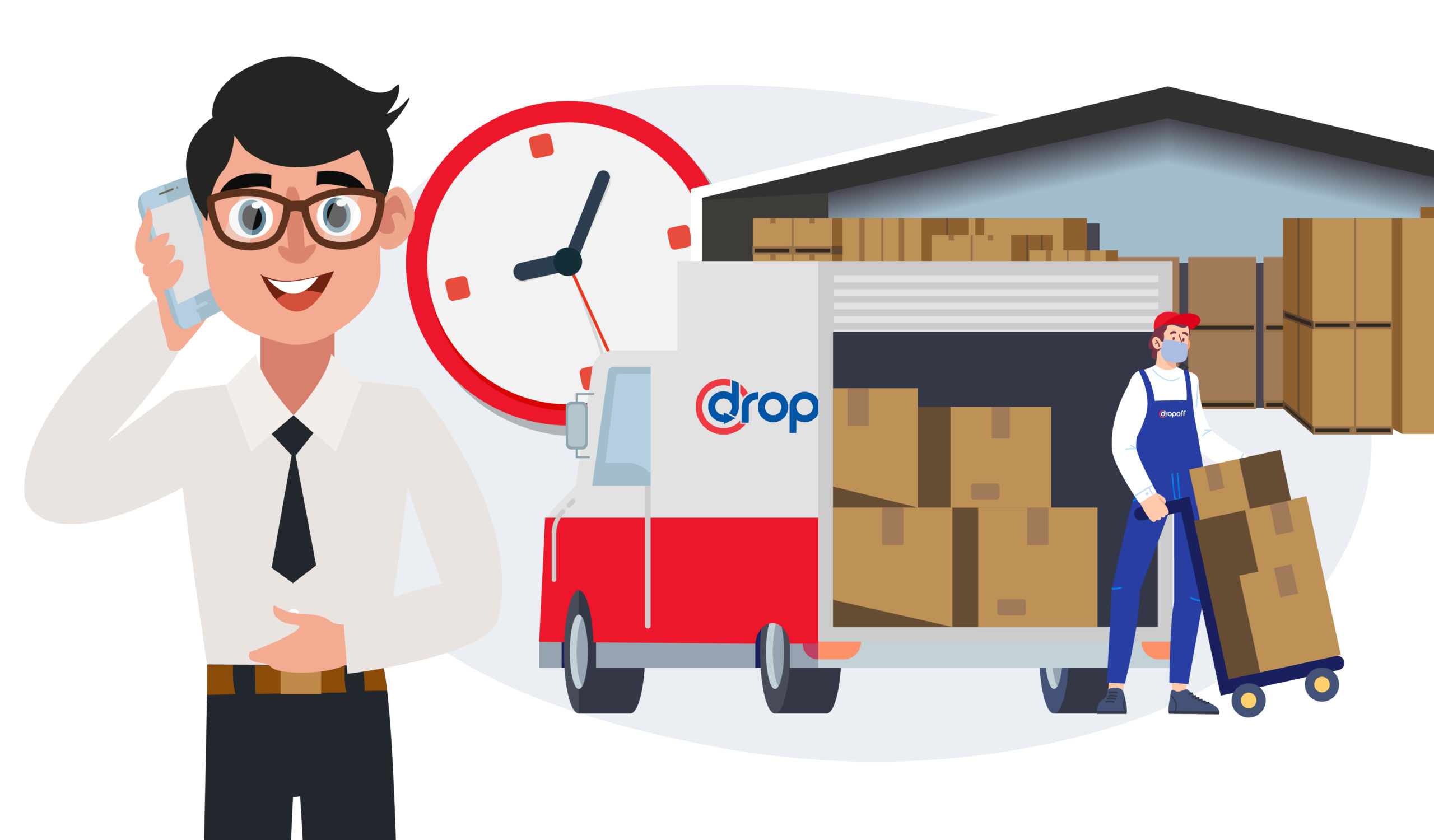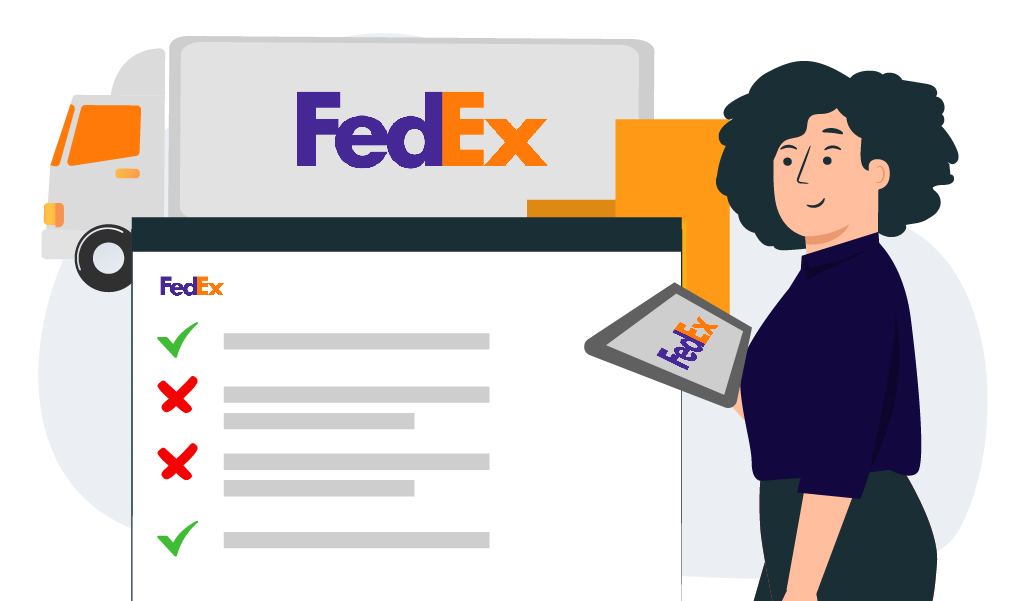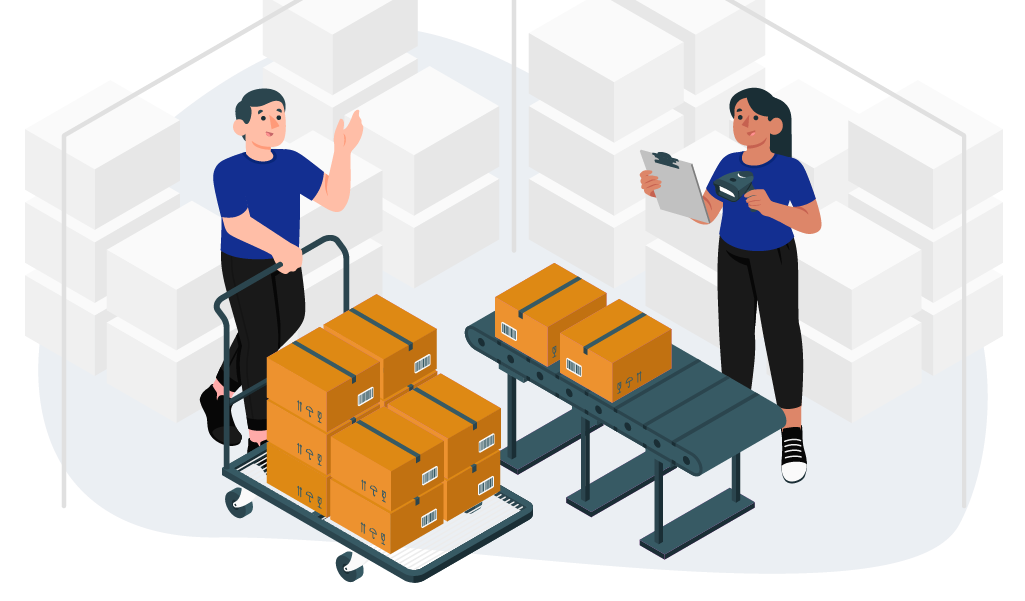Consolidated Shipping: Step-By-Step Guide To Optimize Deliveries

As the business world evolves at breakneck speed, shipping logistics become increasingly complex. One strategy that has gained popularity in recent years is consolidated shipping.
In this comprehensive guide, we’ll explore what consolidated shipping is, its benefits and challenges, when it’s time to start using it, how to get started, and why Dropoff is the ideal partner for efficient consolidated shipping solutions.
What is Consolidated Shipping?
Imagine a medium-sized e-commerce company specializing in electronics. Due to the increase in demand, which has led to higher shipping costs and longer delivery times, the company has decided to partner with a third-party logistics provider that combines multiple orders into single shipments. Through this, the company is able to optimize its shipping operations, reduce costs, and improve delivery times. This strategic move not only enhances customer satisfaction but also boosts the company’s bottom line.
Sounds like a dream? Well, that’s consolidated shipping.
Consolidated shipping involves combining multiple smaller shipments from different shippers into one larger shipment. This consolidated cargo is then transported to its destination, where it’s de-consolidated and delivered to individual recipients. This method is commonly used in both domestic and international shipping scenarios and can involve various modes of transportation, including ground, air, and sea.
In 2023, eCommerce retail purchases surged from 14.1% to 22%, with over 2.14 billion shoppers now making purchases online. With the escalating demand, the need to ship items has never been greater. Although the supply chain crisis is gradually stabilizing, shipment prices remain 400% higher than they were before the pandemic.
Given these circumstances, businesses must explore efficient ways to manage their shipments, such as consolidated shipping. Without it, companies might sink into the swelling shipment prices.

Why is Consolidated Shipment Good for Your Company?
Here are the advantages of order consolidation:
a. Cost Savings
By consolidating multiple shipments into one, businesses can take advantage of economies of scale and reduce transportation costs. According to Flock Freight research, it can generate a 20% cost savings per truckload, providing a significant financial advantage.
This cost reduction can free up resources for investment in other areas of the business, contributing to overall profitability and growth.
b. Improved Efficiency
Managing and tracking fewer shipments simplifies logistics operations and reduces administrative burden. As stated by Nordstrom’s CEO, “We are delivering better service to our customers through faster delivery, with overall delivery speed up 9% from last year,” highlighting the operational efficiency gained through consolidation.
With streamlined processes and fewer logistical challenges to navigate, employees can focus their efforts on more strategic tasks, driving further improvements in productivity and service quality.
c. Enhanced Security
Consolidated cargo is typically packed more securely, reducing the risk of damage during transportation. Additionally, easier tracking ensures better oversight and control over shipments, enhancing security measures. By implementing consolidated shipping, businesses can mitigate the risk of loss or damage to goods in transit, safeguarding valuable assets and maintaining customer trust.
d. Customer Satisfaction
Consolidated shipping often leads to more reliable delivery times, which can increase customer satisfaction. With reduced lead times, customer satisfaction levels are likely to improve, as evidenced by the fact that 62% of digital shoppers prioritize fast shipping speeds.
Meeting or exceeding customer expectations for timely delivery can enhance a brand’s reputation, drive repeat business, and gain a competitive edge in the marketplace.
e. Maximized Supply Chain Performance
Streamlining shipping operations can optimize the supply chain and improve overall efficiency. This not only results in improved sustainability through fuel efficiency but also contributes to reduced carbon emissions, aligning with environmentally friendly business practices.
Adopting consolidated shipping can enhance a business’s supply chain performance, reduce operational costs, and minimize its environmental footprint, positioning itself for long-term success in a competitive market landscape.
Challenges of Consolidated Shipment
While consolidated shipping offers many benefits, it also presents some challenges:
a. Carrier Availability
Not all carriers may be equipped to handle consolidated freight, requiring businesses to find reliable partners.
For instance, even FedEx and UPS faced a shortage of delivery vans during the e-commerce rush of 2020, emphasizing the importance of securing partnerships with carriers capable of meeting demand. This shortage highlighted the need for businesses to explore alternative last-mile delivery solutions to ensure smooth operations.
b. Planning Requirements
Consolidation necessitates thorough planning and organization to ensure safe and timely deliveries. Just last September, tech giant Apple experienced delays in deliveries for the iPhone 15 Pro Max due to high demand, highlighting the importance of meticulous planning and forecasting.
Businesses must invest in robust logistics planning software and strategies to anticipate demand fluctuations and ensure efficient shipment consolidation.
c. Resource Limitations
Some businesses may lack the resources to handle freight consolidation in-house, leading to outsourcing.
This includes not only delivery trucks but also human resources, as seen with Amazon’s mega trucking ambitions hindered by a lack of delivery drivers. Outsourcing can introduce additional transit time and costs, making it essential for businesses to carefully evaluate their resource capabilities and explore partnerships with third-party logistics providers to overcome resource limitations.
d. Increased Risk of Damage
Consolidated cargo may go through multiple loading and unloading phases, increasing the risk of product damage.
Even the renowned brand IKEA reported numerous damages upon delivery, underscoring the importance of careful handling throughout the shipment process. To mitigate this risk, businesses should invest in quality packaging materials and train personnel in proper handling procedures to minimize damage during transit.
e. Coordination Complexities
Coordinating shipments from multiple sources requires meticulous planning and management.
The bustling ports of Los Angeles and Long Beach, California, gateways to the American consumer market, have become notorious for chronic congestion. In January 2024, the logjam is expected to reach a new level, threatening to send ripples through the entire U.S. economy.
Businesses must navigate these coordination complexities by leveraging advanced logistics technology and establishing clear communication channels with all stakeholders involved in the shipment process.

When Is It Time to Start Using Consolidated Shipping?
Recognizing the optimal moment to implement consolidated shipping can significantly benefit your company. Here are a few indicators that suggest it’s time to make the switch:
1. High Shipping Costs
If your company finds itself grappling with soaring shipping expenses, consolidating shipments could offer a viable solution. By merging multiple shipments into one, you can capitalize on economies of scale and potentially slash transportation costs.
2. Frequent Small Shipments
If your company frequently dispatches small orders, consolidating them into larger shipments could prove to be more cost-effective. Bundling these smaller shipments together can minimize per-shipment costs and streamline the shipping process.
3. Increased Shipping Delays
Once you’re experiencing frequent shipping delays and delivery exceptions due to logistical challenges or carrier constraints, consolidation may offer a solution. By consolidating shipments, you can potentially reduce transit times and enhance overall delivery efficiency.
4. Inconsistent Delivery Times
If your customers have been experiencing inconsistent delivery times due to fragmented shipping schedules, consolidation can help create more predictable and reliable delivery timelines.
5. Complex Logistics
Managing a multitude of shipments can quickly become convoluted and time-consuming. If your logistics operations have become overly intricate to handle efficiently, consolidation may provide a simpler alternative. By consolidating shipments, you can streamline logistics processes and reduce administrative burden.
Getting Started with Consolidated Shipping: The First Steps
Here are the initial three steps to kickstart your journey with consolidated shipping. To further assist you, we’ve added a few expert tips:
Step 1: Evaluate Your Shipping Needs
Begin by thoroughly assessing your current shipping processes, shipment volume, and associated transportation costs. Determine if consolidated shipping aligns with your business requirements and objectives.
Expert Tip: Consider using data analytics tools to analyze your shipping data effectively. This can provide valuable insights into shipment patterns, cost trends, and potential areas for optimization.
Step 2: Find a Reliable Provider
Conduct extensive research to identify reputable logistics providers offering consolidated shipping services. Prioritize providers with a proven track record, experience in your industry, and competitive pricing structures.
Expert Tip: Request references and case studies from potential providers to gauge their performance and reliability. Additionally, explore partnerships with providers offering value-added services such as real-time tracking and customized reporting.
Step 3: Plan and Coordinate Shipments
Collaborate closely with your chosen provider to develop a comprehensive plan for your consolidated shipments. Should you deploy direct-to-consumer fulfillment, multi-carrier shipping, or other strategies? Clearly communicate your shipment requirements, delivery timelines, and any specific instructions to ensure seamless transportation and delivery.
Expert Tip: Implement robust communication channels and establish regular checkpoints with your provider to monitor shipment progress and address any potential issues promptly. This proactive approach can help mitigate risks and enhance overall efficiency in the shipping process.

How to Choose a Provider for Consolidated Shipping?
When selecting a provider for consolidated shipping, consider the following criteria:
1. Experience and Reputation
Opt for a provider with a long-standing presence and a sterling reputation within the industry. Instances of fraud, such as double-brokering, have surged by 400% according to a The Wall Street Journal article, emphasizing the need for a trustworthy partner.
Look for companies with a track record of successful shipments, positive client testimonials, and a commitment to transparency and integrity.
2. Cost-Effectiveness
Compare pricing structures and fees among different providers to ensure you’re receiving optimal value for your investment.
As rates for Asia to North America’s West Coast shipments soar, reaching the $5,000 per FEU mark, it’s crucial to assess cost-effectiveness meticulously. Additionally, consider any hidden fees or surcharges that may impact your overall shipping expenses.
3. Customer Support
Assess the level of customer support offered by each provider, focusing on communication channels and responsiveness to inquiries.
The 2022 Inbound Logistics 3PL Market Research Report highlights that poor customer service is the leading cause of a failed 3PL partnership, with 62% of instances attributed to this factor. Ensure that your chosen provider offers accessible customer support channels, such as phone, email, and live chat, and demonstrates a proactive approach to addressing client concerns and inquiries.
4. Service Offerings
Look for providers that offer a diverse array of shipping services and options tailored to meet your specific needs. Regardless of their reputation or cost efficiency, if a partner fails to align with your business requirements, they may not be the ideal fit for your operations.
Consider factors such as shipping modes (air, sea, ground), transit times, tracking capabilities, and specialty services (temperature-controlled shipping, hazardous materials handling) to ensure that the provider can accommodate your unique shipping needs.
5. Reliability and Timeliness
Prioritize providers known for their reliability and punctuality in deliveries, crucial factors in ensuring customer satisfaction. With 62% of consumers expressing a preference for quick delivery, including a desire for same-day delivery, reliability in meeting delivery deadlines is paramount.
Evaluate the provider’s on-time delivery performance, transit times, and handling of unexpected delays or disruptions to gauge their reliability in fulfilling your shipping requirements.

Why Dropoff Is the Ultimate Consolidated Shipping Partner
Dropoff stands out as the ultimate partner for streamlined consolidated shipping solutions, particularly for last-mile deliveries. With years of industry experience, Dropoff offers a comprehensive range of services tailored to meet diverse business needs, from ground transportation to air and sea freight. By partnering with Dropoff, businesses can optimize their shipping processes, reduce costs, and enhance customer satisfaction through reliable and timely deliveries.
As a leading last-mile delivery provider, Dropoff offers industry-leading same-day delivery services with real-time tracking and image confirmations, ensuring transparency and accountability throughout the shipping process. Customizable logistics software and a commitment to on-time delivery, backed by reliable courier actions, further distinguish Dropoff as the preferred choice for businesses across various industries. With a focus on supply chain optimization and cost-effective solutions, Dropoff enables businesses to operate smoothly while maintaining a competitive edge in the market.
FAQs
Order consolidation is the process of combining multiple individual orders into a single shipment for more efficient handling and delivery.
Order consolidation refers to the practice of merging multiple individual orders into one shipment, streamlining the shipping process and reducing costs.
A consolidated delivery is dispatched by assembling all the individual items from multiple orders into one shipment, which is then sent out for delivery to the designated recipients.
Enforcing consolidated shipment involves implementing procedures and systems to ensure that individual orders are combined into consolidated shipments according to predefined criteria, such as destination, weight, or delivery schedule.
Shipping consolidation services are offerings provided by logistics companies or third-party providers that specialize in combining multiple shipments from different sources into consolidated loads for more efficient transportation and delivery. These services aim to optimize shipping processes, reduce costs, and improve delivery times for businesses.

